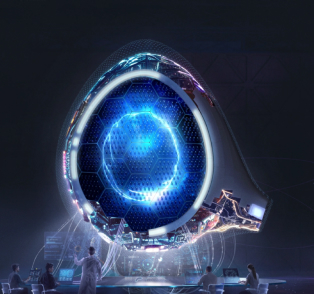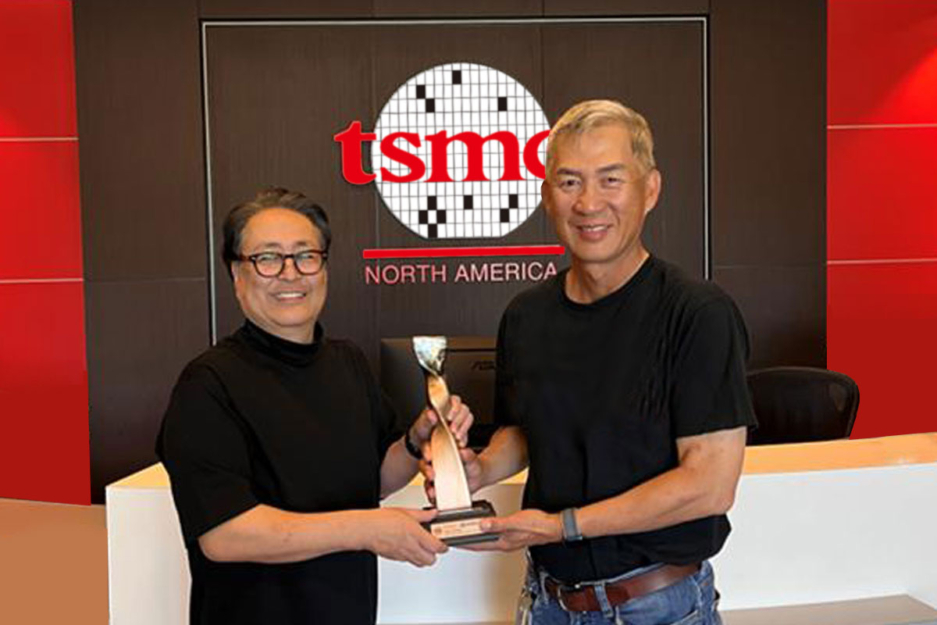Not known Facts About apollo 3.5 blue plus processor
Not known Facts About apollo 3.5 blue plus processor
Blog Article

Powered from the Ambiq Apollo3 Blue microcontroller (MCU), the token is actually a Bodily system applying Bluetooth® alerts to trace Other people close by. Besides staying exact, secured, Safe and sound, As well as in a small form aspect, the Apollo3 Blue delivers the mandatory overall performance with out sacrificing battery lifestyle. The token is expected to past four to six months with out a recharge.
The brand new style and design Middle includes structure, verification, and validation engineering teams that will deal with the long run design of Location-enabled edge intelligent devices.
When loaded, drastically greater than ninety percent with the mass from the phase was propellant; even so, the ultra-light-weight style experienced led to two failures in structural tests. As an alternative to getting an intertank framework to separate the two gasoline tanks as was performed inside the S-IC, the S-II used a typical bulkhead which was created from both equally the very best of your LOX tank and bottom on the LH2 tank.
Expend 20x a lot less on translation by customizing Machine Translation models and automating supply material advancement and put up-editing.Make their most effective assist posts, brokers, and chatbots obtainable 24/seven in in excess of 650 languagesBoost international efficiency via language-inclusive electronic workplacesRe-use and share the most effective prompts utilizing the new GenAI portal and a number of software package integrations.A Breakthrough in Generative AI and Translation
"We are privileged to hold the collaboration with EDBI, Excelpoint, and iWOW, and they are pleased with the results we see inside the Singapore TraceTogether token."
Two cameras captured the staging function; 1 clip is demonstrated. The very first phase falls absent, followed by the interstage ring. Two motion-photo cameras were aboard Apollo 4. These ended up mounted on the Saturn V in order to seize the separation of the first stage and interstage with the launch automobile.
Aldrin heard that Armstrong would be the 1st due to the fact Armstrong was a civilian, which produced Aldrin livid. Aldrin tried to steer other lunar module pilots he should be initially, However they responded cynically about whatever they perceived like a lobbying marketing campaign. Aiming to stem interdepartmental conflict, Slayton told Aldrin that Armstrong might be initial considering the fact that he was the commander. The decision was declared within a push conference on April fourteen, 1969.[94]
Issues had been seeking very good for NASA firstly of 1966. The copyright program was halfway carried out and effectively on the right track to perform all the most important software aims by the top with the 12 months, and Apollo was from the pipeline on target to start manned missions early in 1967. And flights in assist of Apollo’s lunar purpose have been properly underway by this level.
But it surely wasn’t prolonged prior to this approach fell away from favour. With spacecraft 014, the spacecraft for Apollo 2, slipping badly at the rear of, a lot of started questioning the worth of flying a next Block I mission. There wasn’t a lot of the company could understand from a Block I flight that it could then implement towards the Moon-sure Block II missions. Apart from, NASA experienced extended deserted the apply of duplicating missions; not considering the fact that Gus Grissom followed in Al Shepard’s suborbital contrails in 1961 experienced NASA duplicated a mission.
With President John F. Kennedy’s deadline approaching for landing a person around the Moon by the tip of the 10 years, NASA Affiliate Administrator for Manned Area Flight George E. Mueller selected a Daring method for that Saturn V rocket’s initial flight. As an alternative to the greater conservative approach to initially testing Each individual rocket stage independently, and afterwards flying the entire rocket, he selected the “all-up” solution, by which every one of the rocket’s levels would be tested on an individual flight.
Engineers finished a series of integrated tests to prepare the car for its rollout towards the launch pad. In the meantime, within the VAB’s Higher Bay 3, on March 29, workers stacked the S-IC first stage of your SA-502 auto on ML-two for that Apollo six mission, One more uncrewed examination in the Saturn V rocket and Apollo spacecraft planned for early 1968. After a stack-destack-restack spherical to begin with utilizing the S-II spacer a result of the late arrival of this S-II stage, personnel concluded assembling the 3-stage rocket for Apollo 6 on July fourteen, marking The very first time that two Saturn V rockets stood aspect by side in the VAB.
The 1st three flights carrying Apollo products were being launched working with Saturn IBs. This smaller launch car or truck didn't use the services at KSC, but challenges resolved by Saturn IB flights will be legitimate for those for being introduced via the Saturn V. Each the Saturn IB along with the Saturn V would utilize a S-IVB, though the IB would use it as its 2nd, remaining stage, as opposed to the 3rd phase as over the Saturn V.
In 2006, as Portion of the proposed Constellation application, NASA unveiled strategies to assemble two Shuttle Derived Launch Motor vehicles, the Ares I and Ares V, which would use some present Room Shuttle and Saturn V hardware and infrastructure. The 2 rockets were meant to increase basic safety by specializing Just about every car for various tasks, Ares I for crew launches and Ares V for cargo launches.[97] The first style on the heavy-raise Ares V, named in homage to your Saturn V, was 360 feet (one hundred Electronic components ten m) in top and featured a core phase based on the Area Shuttle Exterior Tank, with a diameter of 28 feet (eight.
with approach paths no cost of huge hills, tall cliffs or deep craters That may confuse the landing radar and trigger it to issue incorrect readings;
Get Smart. Use Less Energy.
Ultra-low power SoCs for IoT endpoint devices
that demand complex operations
and longer battery life.
✍ Ambiq® is committed to further improve the quality of life by enabling the intelligence of endpoints while further reducing carbon footprints. Ambiq – your partner in endpoint intelligence.
✯✯✯Based in Austin, San Jose, Hsinchu, Shenzhen, and Shanghai, our leadership and management teams consist of advocates, builders, enthusiasts, entrepreneurs, explorers, incubators, inventors, pioneers, protectors, thinkers, and visionaries. With a diverse spectrum of experiences and skillset, we came together and united with one goal to enable the true Internet of Things where the battery-powered endpoint devices can truly be connected intuitively and intelligently 24/7.
Ambiq Wins the Demo of the Year Award at 2023 TSMC Technology Symposium
September 7, 2023, Austin, TX – Ambiq®, a leading developer of ultra-low-power semiconductor solutions that deliver a multifold increase in energy efficiency, was awarded the Demo of the Year Award by TSMC as a participant of the Innovation Zone at the 2023 TSMC North America Technology Symposium.
Ambiq Wins the Demo of the Year Award at 2023 TSMC Technology Symposium
During the April event, Ambiq showcased various product design wins using TSMC’s 22nm technology in wearables, digital health, smart home, Industrial IoT, pet trackers, and retail segments, with industry-leading energy efficiency. Ambiq also featured two live demos emphasizing its leadership in enabling endpoint AI with its HeartKit™ for remote patient monitoring and its graphics display capabilities for a vivid user interface. 
TSMC pioneered the pure-play semiconductor foundry business model when it was founded in 1987, helping startup companies accelerate their innovations by providing access to the industry’s leading process technologies and manufacturing capacity. Since 2021, TSMC has expanded that mission with an Innovation Zone at its worldwide Technology Symposiums, highlighting how TSMC partners with startup companies to enable cutting-edge products from various applications, including high-performance computing, communication, automotive, IoT, and consumer segments.
“We’re grateful to TSMC and our booth visitors for allowing us to share our energy-efficient technology and processor solutions with them,” said Ambiq’s CEO, Fumihide Esaka. “We’re moving towards an exciting frontier of AI becoming more engrained with our daily lives. With that vision on the horizon, we will continue to develop innovative and first-of-its-kind ultra-low-powered solutions that keep innovation and sustainability in mind. 
Ambiq’s mission is to develop the lowest-power semiconductor solutions to enable intelligent devices everywhere by developing the lowest-power semiconductor solutions to drive a more energy-efficient, sustainable, and data-driven world. Ambiq has helped leading manufacturers worldwide develop products that last weeks on a single charge (rather than days), while delivering a maximum feature set in compact industrial designs. Ambiq’s goal is to take Artificial Intelligence (AI) where it has never gone before in mobile and portable devices, using Ambiq’s Smart spectacle advanced ultra-low power system on chip (SoC) solutions. Ambiq has shipped more than 200 million units as of March 2023.
Ambiq Designs Low-Power for Next Gen Endpoint Devices
Ambiq’s VP of Architecture and Product Planning, Dan Cermak, joins the ipXchange team at CES to discuss how manufacturers can improve their products with ultra-low power. As technology becomes more sophisticated, energy consumption continues to grow. Here Dan outlines how Ambiq stays ahead of the curve by planning for energy requirements 5 years in advance.
Ambiq Highlights From Embedded World 2024
Facebook | Linkedin | Twitter | YouTube